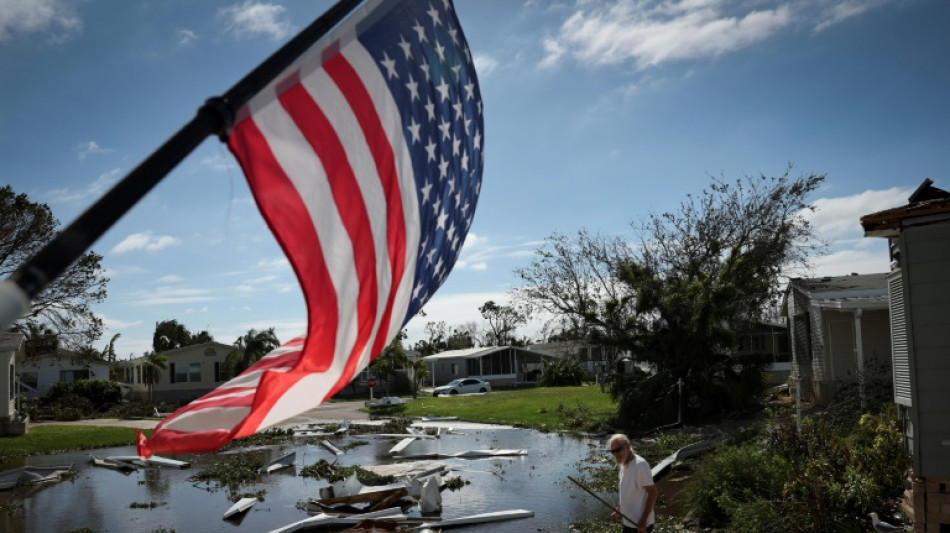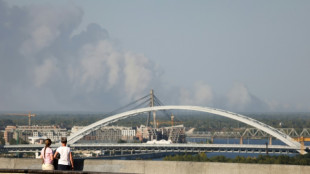

Hurricane wreaks havoc on Florida, Biden warns of death toll
Hurricane Ian left a trail of devastation across Florida on Thursday with whole neighborhoods reduced to shattered ruins and millions left without power as US President Joe Biden warned of a high death toll.
The storm, one of the most powerful ever to hit the United States, churned towards South Carolina after hammering the southern coastal state, where many residents were awaiting rescue in flooded homes.
"This could be the deadliest hurricane in Florida history," Biden said after a briefing at FEMA emergency management headquarters in Washington.
He said the numbers "are still unclear, but we're hearing reports of what may be substantial loss of life."
Florida Governor Ron DeSantis described the destruction in the southwest of the state as a "500-year flood event."
Aerial photos of Fort Myers, where the hurricane made landfall as a powerful Category 4 storm on Wednesday, showed swathes of destruction in residential areas.
Roads and bridges were washed out by storm surge and trees toppled by howling winds of up to 150 miles per hour (240 kilometers per hour).
At least six deaths have been confirmed by county officials but the toll is expected to rise significantly as rescuers fan out.
A Coast Guard official said helicopter crews were plucking people from the rooftops of homes inundated by floodwaters.
The US Border Patrol said a boat carrying migrants sank at sea during the hurricane on Wednesday, leaving 20 missing. Four Cubans swam to shore in the Florida Keys and the coast guard rescued three others.
Ian was downgraded to a tropical storm overnight but the National Hurricane Center (NHC) said it was expected to regain hurricane strength during the day and issued a hurricane warning for the entire coast of South Carolina.
- 'Really devastated' -
After an initial look at the breathtaking destruction, DeSantis, the governor, said Fort Myers and adjacent Cape Coral were "inundated and really devastated" by the storm.
Ian also menaced the city of Orlando and the nearby Disney theme parks, which were shuttered.
The hurricane's savagery was most evident along Florida's southwest coast, much of which was plunged into darkness after the storm wiped out power.
Tracking website poweroutage.us said 2.66 million homes and businesses were without electricity in the so-called Sunshine State.
Joe Ketcham, 70, of Punta Gorda, told AFP of the "relentless" banging of metal and his fears about what was to come as the hurricane battered his home.
"But I have the almighty savior who I prayed to. This is all material," Ketcham said of the damage around him. "We're alive. We're fine."
Lisamarie Pierro said that the storm "was long and intense" and left a "mess."
"But this is nothing," she said. "My house is still standing."
Biden declared a "major disaster" in Florida, a move that frees up federal funding for storm relief.
"We're continuing to take swift action to help the families of Florida," he tweeted. "I want the people of Florida to know that we will be here at every step of the way."
- Water rising -
DeSantis meanwhile warned that broad regions of Florida remained under threat.
"The amount of water that's been rising, and will continue today even as the storm is passing, is basically a 500-year flood event," he told a press conference.
Two barrier islands near Fort Myers, Pine Island and Sanibel Island, popular with vacationers, were essentially cut off when the storm damaged causeways to the mainland.
Mandatory evacuation orders had been issued in many areas of Florida ahead of the storm, with several dozen shelters set up.
Airports stopped all commercial flights, and cruise ship companies delayed or canceled voyages.
Before pummeling Florida, Ian had plunged all of Cuba into darkness Tuesday after downing the island's power network.
Human activity has caused life-threatening climate change resulting in more severe weather events across the globe.
(F.Moulin--LPdF)



